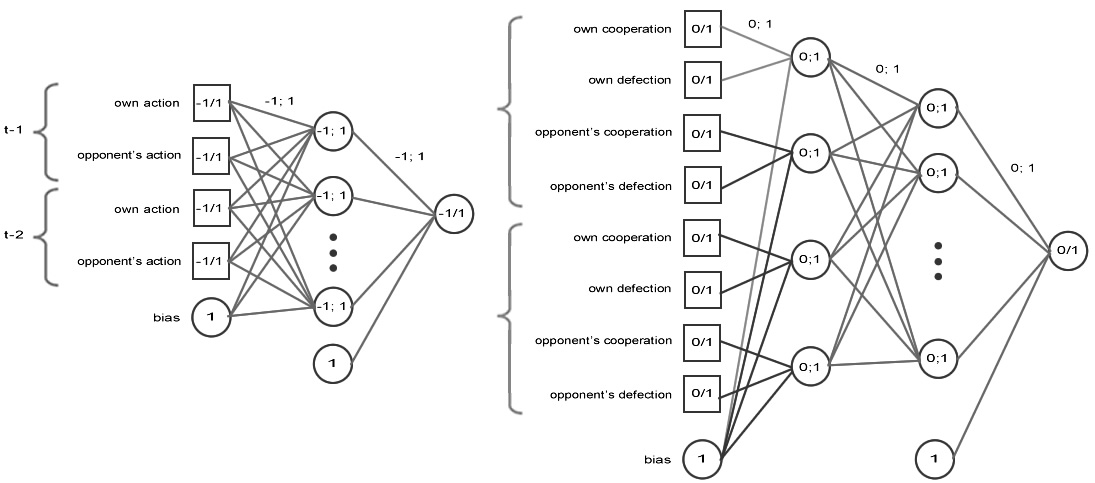- Multi-agent systems
- Designing Robot Swarms
- Robustness in Foraging E-puck Swarms Through Recruitment
- Information Flow Regulation in Preferentially Foraging Swarms
- The Information-Cost-Reward framework for understanding robot swarm foraging
- Behaviour-Data Relations Modelling Language For Multi-Robot Control Algorithms
- Task Allocation in Foraging Robot Swarms
- Information Flow Principles for Plasticity in Robot Swarms
- Understanding the Role of Recruitment in Robot Foraging
- Controlling Ant-Based Construction
- Boid Game-Playing through Randomised Movement
- Neural networks
- Robots
- Essays
[Neural Networks and Evolution of Cooperation]
Date: Jan 2011
Technologies used: Java, JFreeChart, Ant Script, Model-View-Controller, Git
The paper investigates artificial evolution of cooperation in the Iterated Prisoner's Dilemma using a number of player implementations. Existing strategy encoding and neural network models are compared with action-discriminating neural network, described here for the first time.
Evaluation is performed in terms of number of generations needed for reaching a desired cooperation level. The nature of the evolved strategies is also evaluated. Examples when the action-discriminating model evolved the most beneficent strategies are given.

Technologies used: Java, JFreeChart, Ant Script, Model-View-Controller, Git
The paper investigates artificial evolution of cooperation in the Iterated Prisoner's Dilemma using a number of player implementations. Existing strategy encoding and neural network models are compared with action-discriminating neural network, described here for the first time.
Evaluation is performed in terms of number of generations needed for reaching a desired cooperation level. The nature of the evolved strategies is also evaluated. Examples when the action-discriminating model evolved the most beneficent strategies are given.















{Please enable JavaScript in order to post comments}